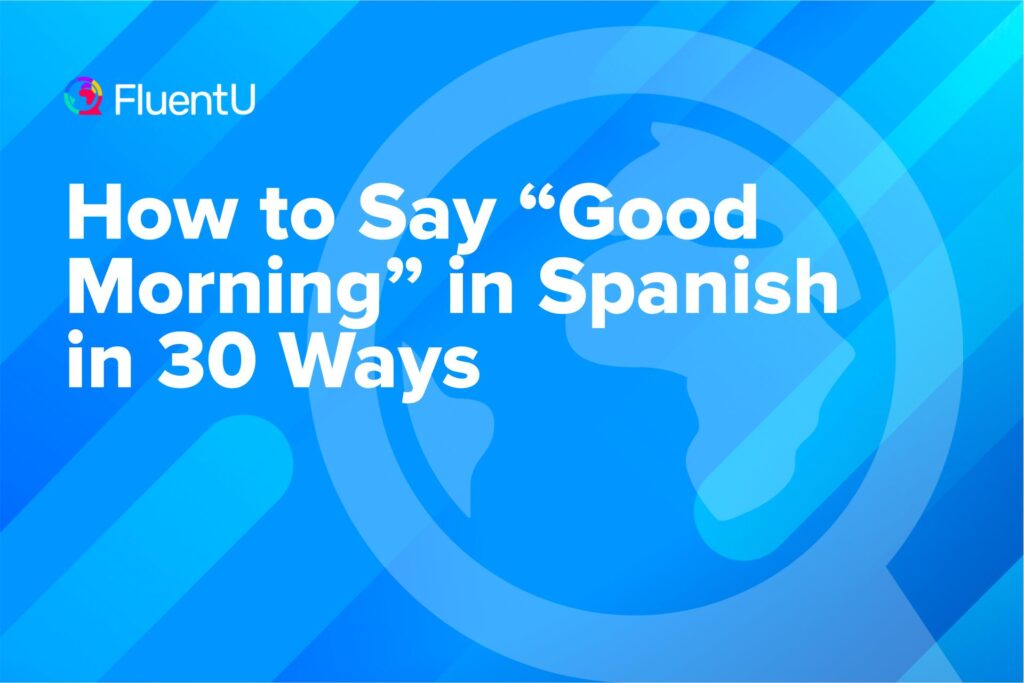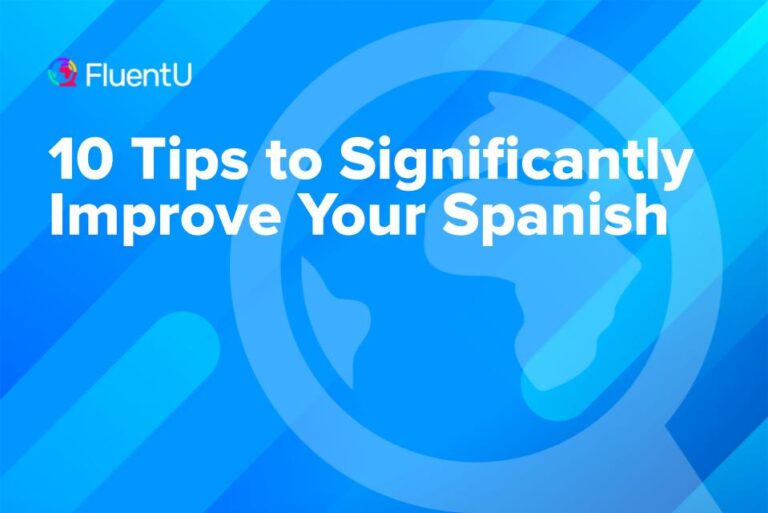Contents
- Basic Phrases to Say Good Morning in Spanish
- Asking Questions to Say Good Morning in Spanish
- ¿Cómo está? — How are you? (formal) / ¿Cómo estás? — How are you? (informal)
- ¿Cómo amaneció? — How did you sleep? (formal) / ¿Cómo amaneciste? — How did you sleep? (informal)
- ¿Qué tal? — What’s up? / How’s everything?
- ¿Cómo durmió? — How did you sleep? (formal) / ¿Cómo dormiste? — How did you sleep? (informal)
- ¿Qué hay de nuevo? — What’s new?
- ¿Cómo le va? — How’s it going? (formal) / ¿Cómo te va? — How’s it going? (informal)
- Using Titles and Pet Names to Say Good Morning in Spanish
- Buenos días, señor (señora/señorita) — Good morning, Mr. (Mrs./Miss)
- Buen día, joven (jovencito/a) — Good day, young (person)
- Buenos días, doctor (doctora) — Good morning, doctor
- Saludos, profesor (profesora) — Greetings, professor
- Buen día, maestro (maestra) — Good day, teacher
- Buenos días a todos — Good morning, everyone
- Buenos días, amigo (amiga) — Good morning, friend
- Buenos días, familia — Good morning, family
- Buen día, cariño — Greetings, honey
- Buen día, querido (querida) — Good day darling
- More Spanish Phrases to Use in the Morning
- Feliz día — Happy day
- Feliz lunes (martes, etc) — Happy Monday (Tuesday, etc.)
- ¡Levántese! – Wake up! (formal) / ¡Levántate! — Wake up! (informal)
- Que tenga un buen día — I hope you have a nice day (formal) / Que tengas un buen día — I hope you have a nice day (informal)
- Espero que haya dormido bien — I hope you slept well (formal) / Espero que hayas dormido bien — I hope you slept well (informal)
- Es hora de levantarse — It’s time to get up
- Mucho gusto — It’s a pleasure
- Es un placer conocerlo — It’s a pleasure to meet you (male) / Es un placer conocerla — It’s a pleasure to meet you (female)
- Qué hermoso día — What a beautiful day
- Excelente fin de semana — Have a good weekend
- Excelente inicio de semana — Have an excellent week
- And One More Thing…
How to Say “Good Morning” in Spanish in 30 Ways

If there’s one thing people remember from high school Spanish class, it’s that “good morning” in Spanish is buenos días . But if your goal is to chat with native speakers (and sound like one), you should definitely be prepared with more morning phrases.
Let me teach you a bunch more ways to say good morning in Spanish, from the very basics to native-sounding phrases.
Download: This blog post is available as a convenient and portable PDF that you can take anywhere. Click here to get a copy. (Download)
Basic Phrases to Say Good Morning in Spanish
These are the one- or two-word common phrases you learn in Spanish class. It’s great to know them at the beginning, especially because you’ll hear them constantly.
Buenos días — Good morning
You can use buenos días to say good morning to anyone: your partner, roommate or that next-door neighbor you pass by every morning on your way to class.
Buen día — Good day
A shorter version of buenos días, many Spanish speakers use this phrase regardless of their country of origin.
Buenas — Hi
Use buenas to informally greet someone when visiting them or entering a store. You can use this word no matter what time of day it is.
Saludos — Hello / Greetings
This is a shorter way to greet someone in Spanish throughout the day.
Note that saludos is less common in everyday speech. Instead, it’s most common in formal settings, such as at your job.
Asking Questions to Say Good Morning in Spanish
If you’re like me and love to practice Spanish at every chance, you can add one of the following questions to get the conversation going after buenos días.
¿Cómo está? — How are you? (formal) / ¿Cómo estás? — How are you? (informal)
Like in English, it’s super easy (and quite common) when you’re greeting someone in Spanish to ask how they are.
¿Cómo amaneció? — How did you sleep? (formal) / ¿Cómo amaneciste? — How did you sleep? (informal)
This phrase literally means, “how did you wake up?”
If you’re greeting someone who lives with you, or giving a quick call to your Spanish-speaking friend early in the morning, impress him or her by asking how they slept.
¿Qué tal? — What’s up? / How’s everything?
Another excellent follow-up to good morning in Spanish, you can use this phrase with someone you’re familiar with.
¿Qué tal tu día? — How’s your day (going)? is another alternative.
¿Cómo durmió? — How did you sleep? (formal) / ¿Cómo dormiste? — How did you sleep? (informal)
Similar to ¿cómo amaneció?, you can ask someone how they slept with ¿cómo durmió?
¿Qué hay de nuevo? — What’s new?
¿Qué hay de nuevo? is an alternative to ¿qué tal? and can also be used any time of the day.
You won’t usually learn colloquial phrases like these in the classroom, and there are many more.
The best way to pick up on them is by speaking with native speakers more and consuming native content, like watching videos on FluentU. Since the platform has videos primarily targeted to native speaker audiences, they’re full of colloquialisms like qué tal and qué hay de nuevo.
FluentU takes authentic videos—like music videos, movie trailers, news and inspiring talks—and turns them into personalized language learning lessons.
You can try FluentU for free for 2 weeks. Check out the website or download the iOS app or Android app.
P.S. Click here to take advantage of our current sale! (Expires at the end of this month)

¿Cómo le va? — How’s it going? (formal) / ¿Cómo te va? — How’s it going? (informal)
Finally, you can use ¿cómo le va? to keep the conversation going with whoever you greet. It’s just another way of saying ¿cómo estás?
Using Titles and Pet Names to Say Good Morning in Spanish
Besides asking questions, you can greet someone in the morning by identifying them with a title or a descriptive noun phrase, even when you don’t know them!
Buenos días, señor (señora/señorita) — Good morning, Mr. (Mrs./Miss)
When you want to address someone but you don’t know their name, you can use señor, señora or señorita. Problem solved!
Buen día, joven (jovencito/a) — Good day, young (person)
For a younger person—and if you’re older—you can use joven or jovencito(a) to say good morning in Spanish. It sounds a bit less dated than saying señor(a).
Buenos días, doctor (doctora) — Good morning, doctor
If the person is a doctor or has a PhD, you can greet them like this.
Saludos, profesor (profesora) — Greetings, professor
Say hello to your college professor with this phrase.
Buen día, maestro (maestra) — Good day, teacher
What better way to greet your Spanish teacher than with a “good morning” phrase in Spanish?
Buenos días a todos — Good morning, everyone
When entering a room full of people or a meeting, you can say buenos días a todos to greet everyone at once. And as always, adding a little hand wave never hurt.
Buenos días, amigo (amiga) — Good morning, friend
If you’re meeting your friends in the morning, you can say buenos días, amigo, to add more connection.
Buenos días, familia — Good morning, family
Write this in your family WhatsApp group chat to teach them a bit of Spanish.
Buen día, cariño — Greetings, honey
This is a bit more personal and is commonly used with someone’s partner or family members.
Buen día, querido (querida) — Good day darling
Similar to cariño, use querida or querido to say good morning in Spanish to someone you’re in a romantic relationship with or with family members.
More Spanish Phrases to Use in the Morning
With this starter list for saying good morning in Spanish, you’re no longer stuck with the same old buenos días.
But I’m not done yet!
Tack on a few expressions below to your buenos días and you’re solid!
Feliz día — Happy day
Wish someone a happy day with feliz día.
Feliz lunes (martes, etc) — Happy Monday (Tuesday, etc.)
Like English (i.e., happy Monday, Tuesday, etc), this phrase is a friendly way to say hello in the morning.
¡Levántese! – Wake up! (formal) / ¡Levántate! — Wake up! (informal)
Get that stubborn sleeper to wake up by yelling, ¡levántate!
Que tenga un buen día — I hope you have a nice day (formal) / Que tengas un buen día — I hope you have a nice day (informal)
Don’t just say buenos días. You can wish someone a good day at the end of a quick hello.
Espero que haya dormido bien — I hope you slept well (formal) / Espero que hayas dormido bien — I hope you slept well (informal)
Instead of asking the person you’re greeting how they slept, you can outright tell them you hope they slept like a baby.
Es hora de levantarse — It’s time to get up
A bit nicer way of waking someone up instead of ¡levántate!
Mucho gusto — It’s a pleasure
If you’re meeting someone for the first time, you can follow up buenos días with mucho gusto.
Es un placer conocerlo — It’s a pleasure to meet you (male) / Es un placer conocerla — It’s a pleasure to meet you (female)
This is another way of telling someone you’re happy to meet them.
Qué hermoso día — What a beautiful day
Get the banter going after buenos días by commenting on the weather in Spanish.
Excelente fin de semana — Have a good weekend
If you say good morning in Spanish right before or during the weekend, add this expression to wish someone a great weekend.
Excelente inicio de semana — Have an excellent week
You can wish someone a happy start to the week if you say good morning on a Monday. Anyone could use that encouragement!
Saying good morning in Spanish doesn’t have to be boring and repetitive!
You can ask someone how they are and address them by a title. There are tons of ways to keep the conversation going. And with the added expressions at the end, you’ll sound more like a native speaker!
Eager to learn more expressions? Take a look at ways to greet people in Spanish no matter what time of day it is.
And One More Thing…
If you've made it this far that means you probably enjoy learning Spanish with engaging material and will then love FluentU.
Other sites use scripted content. FluentU uses a natural approach that helps you ease into the Spanish language and culture over time. You’ll learn Spanish as it’s actually spoken by real people.
FluentU has a wide variety of videos, as you can see here:

FluentU brings native videos within reach with interactive transcripts. You can tap on any word to look it up instantly. Every definition has examples that have been written to help you understand how the word is used. If you see an interesting word you don’t know, you can add it to a vocab list.

Review a complete interactive transcript under the Dialogue tab, and find words and phrases listed under Vocab.

Learn all the vocabulary in any video with FluentU’s robust learning engine. Swipe left or right to see more examples of the word you’re on.

The best part is that FluentU keeps track of the vocabulary that you’re learning, and gives you extra practice with difficult words. It'll even remind you when it’s time to review what you’ve learned. Every learner has a truly personalized experience, even if they’re learning with the same video.
Start using the FluentU website on your computer or tablet or, better yet, download the FluentU app from the iTunes or Google Play store. Click here to take advantage of our current sale! (Expires at the end of this month.)




